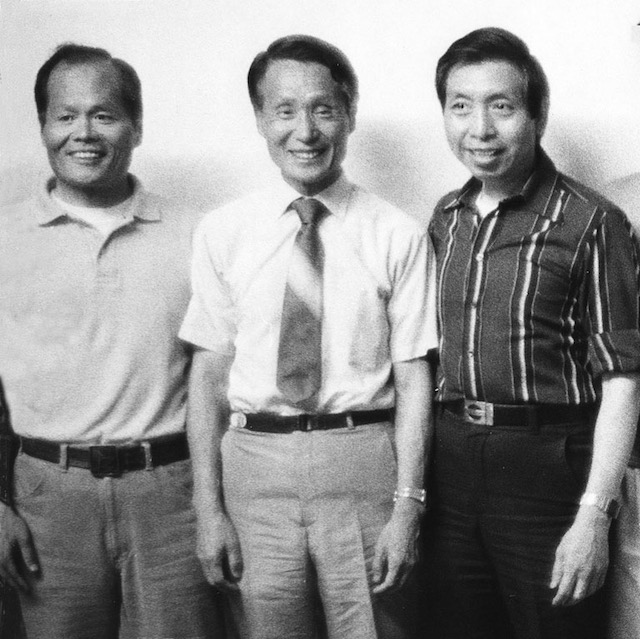The title of “Master” in the Tai Chi lineage following Cheng Man Ching
 Back in (historic) China, the terms used to formally address one’s Taijiquan teacher in the proper way depended on the actual student-teacher relationship. While the Chinese terms differ widely, in English language the use of “Master” became widely accepted. Being formally addressed as a Master by one’s student has been and still is a question of courtesy and respect for many practitioners and teachers, although some schools in the European Cheng Man Ching tradition have dispensed completely with these formal honorary titles.
Back in (historic) China, the terms used to formally address one’s Taijiquan teacher in the proper way depended on the actual student-teacher relationship. While the Chinese terms differ widely, in English language the use of “Master” became widely accepted. Being formally addressed as a Master by one’s student has been and still is a question of courtesy and respect for many practitioners and teachers, although some schools in the European Cheng Man Ching tradition have dispensed completely with these formal honorary titles.
Cheng Man Ching’s practice in the West
 Upon completion of the special teacher training course, Cheng Man Ching simply issued beautifully calligraphed certificates to his New York students as a recognition of their training. Furthermore, following the idea to encourage the most advanced students – and more in tune with his own traditional approach – he invented honorable names for his advanced student groups, like the “Big Six” and “Little Seven”. While Cheng Man Ching seemed to favor learning in a group – and maybe also as a group – he did not award any special status to single persons. He did not even name a successor. Historically, there might have been different reasons for this. In any case, his many students in different countries and the mixed cultural background of them – among other groups Taiwanese who stayed in Taiwan, Chinese who went to the US and Westerners who did not have any contact with the Chinese community – would have made it difficult to choose “The One” that would set the standard for all.
Upon completion of the special teacher training course, Cheng Man Ching simply issued beautifully calligraphed certificates to his New York students as a recognition of their training. Furthermore, following the idea to encourage the most advanced students – and more in tune with his own traditional approach – he invented honorable names for his advanced student groups, like the “Big Six” and “Little Seven”. While Cheng Man Ching seemed to favor learning in a group – and maybe also as a group – he did not award any special status to single persons. He did not even name a successor. Historically, there might have been different reasons for this. In any case, his many students in different countries and the mixed cultural background of them – among other groups Taiwanese who stayed in Taiwan, Chinese who went to the US and Westerners who did not have any contact with the Chinese community – would have made it difficult to choose “The One” that would set the standard for all.
Both Cheng Man Ching’s Western students and his Asian students that migrated to the US accepted the situation that presented itself to them as a given fact and opened up the way for an evolving development of the art in the Cheng Man Ching tradition, where the inner connection of Cheng Man Ching Taijiquan is created by communicative exchange and practicing together. The secure way of a formalized and hierarchical generation structure was finally given up due to the diversity of the practitioners and to encourage the free development of the art. All in all, the formal element got less important over time, although today it is maybe still stronger in the Asian schools than in the European and American branches of Cheng Man Ching Taijiquan.
See also: Cheng Man Ching’s way of teaching (4): On being a master
Author: Taiji Forum
Images: Ken van Sickle and Taiji Forum

